- Administrator
- Albums and Singles
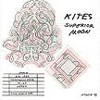 With the recent explosion of interest in the noise scene, a number ofartists, some worthy and some not, have gotten a taste of (relative)success that in years past would have been unheard of. ChristopherForgues, the man behind Kites, utilizes a phalanx of pedals, circuitbreakers, microphones, and amps to achieve his unusual and bracing takeon music. Live, he screams, hisses, and flails into his mics and amps,achieving an unworldly scream of sound that it truly impressive for aone man band.
With the recent explosion of interest in the noise scene, a number ofartists, some worthy and some not, have gotten a taste of (relative)success that in years past would have been unheard of. ChristopherForgues, the man behind Kites, utilizes a phalanx of pedals, circuitbreakers, microphones, and amps to achieve his unusual and bracing takeon music. Live, he screams, hisses, and flails into his mics and amps,achieving an unworldly scream of sound that it truly impressive for aone man band.Mountain Collective For Independent Artists
Superior Moon, a 3” mini CD released on a limited run of 1000 copies ontiny imprint Mountain Collective for Independent Artists, is anexcellent showcase for his sometimes deranged, sometimes haunting brandof musical experimentation. Whereas his last full length Peace Trialswas a good, if not flawed effort, this album's nine untitled tracks aremuch shorter and to the point than some of his previous material.
“Track 6” begins with a relatively gentle swell of electronicbeats with subdued electronic squiggles appearing over the beat. Thenext song begins with what sounds like a spliced sample, slowlybuilding along with a sleigh bell before being demolished by someelectronic hiss in the last ten seconds. “2” is anothertrack built on top of what sounds like electronic beats, but featuresthe sound of a swelling synthesizer as well. “9” isanother impressive track, one that approaches the caustic break beatfreak outs of an artist like Kid606.
While all the songs here areuniformly good, my one complaint is that it appears as though Kitesmight be reigning in his sound just a bit. While a few tracks do lashout with harsh tentacles of electronic hiss, for the most part thesetracks are dominated by subdued beats and slowly swelling sections ofwhite noise. On the other hand, this restraint does serve to make thisrelease one Kites’ most accessible yet. And while there are surelygoing to be those who complain that this accessibility will equal alesser record, the fact is that it is just indicative of the type ofrisks Forgues is willing to take with his one man project.
samples:
Read More
- Administrator
- Albums and Singles
 The first release in this series began with a live performance and is now a mutant of short interference bursts and quiet signal burps. All of the sounds on this third volume use the second volume as source material. This method of "recycling" noise has compressed Wiese's maniacal signature and made him both more listenable and frustrating.
The first release in this series began with a live performance and is now a mutant of short interference bursts and quiet signal burps. All of the sounds on this third volume use the second volume as source material. This method of "recycling" noise has compressed Wiese's maniacal signature and made him both more listenable and frustrating.Helicopter/Kitty Play
Standing at just over 17 minutes long and composed of 37 different tracks, Magical Crystal Blah Volume 3 is a different kind of recording for John Wiese. Many of his four and five second songs are loud, free-form noise pieces that buzz by too quickly for me to take in (as in the compilation released by Troniks recently). Here, however, they are relatively dynamic wave forms that bounce, gurgle, spark, and fade just as much as they rumble and scream. That doesn't make it any easier to digest everything he tosses at me, but it does make listening a lot more intriguing.
It's surprising to hear this kind of range coming from Wiese, considering his penchant for harsh approaches. On this EP, it is easier to associate all of his sounds with something, to draw all the noise into the imagination, despite all of it flashing by in five and six second barrages. There are circular saws, trains, decomposing switchboards, microscopic flatulence, and a myriad of other events captured in Wiese's approach to the material. On many of these tracks Wiese sounds inviting and I'd like to think he'd sound that way even to those who've never heard a shred of noise in their life.
Be that as it may, that doesn't change the fact that there isn't much to commit to memory on this record. All the sounds are fun and enjoyable, but because the album is so haphazardly constructed, it is difficult to catch and keep anything in memory long enough to enjoy all its quirks. In some ways the album's fantastic rate of travel makes it simultaneously intriguing and disposable. Once the album is over, replay is almost necessary because much of what just happened will have seemed like a flash of light too sonically ambivalent to pin down. What Wiese has to his advantage is that many of the sounds seem to repeat themselves, although in slightly altered forms, throughout the EP. The rumbling of subway cars is in the beginning, middle, and end of the recording and many of the tiny, almost quiet blips that pop up all over the record provide some form of continuity.
Still, it's hard for me to imagine when I'll want to put this on again. Once I have it in my player, it's an enjoyable and rapid listen filled with all sorts of industrial crunching and playfulness. Once it is out of my player, I find myself forgetting about it. Not because the noise is bad, but because it seems like Wiese has intentionally made this stuff hard to grasp. How in the world am I supposed to keep any of these tracks fresh in my mind? There are a couple of one and two minute pieces that I can readily identify as soon as they begin (they tend to be the most abrasive), but everything else is a haze. Maybe Wiese intended it that way and this stuff is supposed to fade from memory over time. That's a shame, though, because I think any longer material from him in this form would be spectacular. His brevity and refusal to give the listener even the slightest grip makes this release more difficult and more of a chore to enjoy.
samples:
Read More
- Administrator
- Albums and Singles
 Onhis latest solo album (the first since the disbanding of Guided ByVoices), Pollard slides through varying styles and approaches, craftinga diverse and captivating release in the process.
Onhis latest solo album (the first since the disbanding of Guided ByVoices), Pollard slides through varying styles and approaches, craftinga diverse and captivating release in the process. Merge
The brevity ofmany of the songs ("I'm a Strong Lion" clocks in at only 1:08) and goingquickly from one to another keeps things interesting, but it also makesthe album feel even longer than it is. Despite the diversity of stylesranging from heavy '70s rock ("Field Jacket Blues") to jangly guitars("Boy in Motion") to abrasive ("Kensington Cradle"), the songs fittogether well and share a common layered and heavy feel. The lyricsthroughout are abstract and sparsely beautiful. The album is filledwith a rich density, both in the sheer volume of material and in thedetail of each small gem.
samples:
Read More
- Administrator
- Albums and Singles
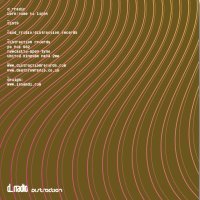 This, the first of three limited edition Death Row Radio 7" singles coming in 2006, contains the gentlest ‘fuck you’ to creationists I’ve ever heard. If the child behind the voice of the A side can understand and explain the origins of the universe, then maybe there still is hope for the knuckle-dragging right wingers of the world.
This, the first of three limited edition Death Row Radio 7" singles coming in 2006, contains the gentlest ‘fuck you’ to creationists I’ve ever heard. If the child behind the voice of the A side can understand and explain the origins of the universe, then maybe there still is hope for the knuckle-dragging right wingers of the world.
Distraction
"Born" weaves live and processed beats together into a crackling touch rhythm. As this percussion lays a beat, the song takes shape, but it sounds like it's being constructed backwards, revealing itself perfect piece by perfect piece. A beautiful distant piano sinks briefly as the voice of a young child is heard—probably sampled from some relatively obscure source—clearly explaining the origins of the universe. The melody is squeezed out drop by drop as a mini choir, flute, and chimes elevate the song into one of the finest pieces of ghostly analogue lullaby gospel to come from this or any other part of the world.
The flipside, "Come to Light," has a core of a bright (but incomplete) jazzy guitar loop which provides the rhythmic pull of the song with the clockwork beats supporting. The song’s other melodic satellites orbit and overlap this central piece, letting it flow while appearing to build and swell.
In this dark winter of bedroom electronic acts with borrowed acoustic guitars, the weaving of analogue and digital sourced sounds is not exactly a rarity. Cracked music software seems to be all the rage, most of the product is something instantly reminiscent of something else, and the music usually ends up in an unsurprising grainy/melodic/electronic style. With the tidal flood of sound-alikes rolling in it's difficult to sift the gold from the dirt, so I thank my lucky stars that I came across D_RRadio.They might take their time with completing the music and as impatient I am for the next instalment, I’ll be waiting.
 
Read More
- Administrator
- Albums and Singles
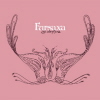 Tara Burke's music is a shining example of what is horribly wrong with all this New Weird America crap. For all of its cerebral machinations there is little emotional impact, almost nothing human capable of taking me from the mundane to the apparently odd world of psychedelic composition. Some of the music may sound nice and full, but I just don't connect with it.
Tara Burke's music is a shining example of what is horribly wrong with all this New Weird America crap. For all of its cerebral machinations there is little emotional impact, almost nothing human capable of taking me from the mundane to the apparently odd world of psychedelic composition. Some of the music may sound nice and full, but I just don't connect with it.
ATP
Difficult music usually presents itself in one of three ways: as an academic experiment; as a means of expressing some idea in a non-conventional manner; or as a purely aesthetic recording meant to entertain or provoke particular moods or mental states. Fursaxa doesn't fit any of those very well at all and now that I think about it, most of this psychedelic folk stuff completely misses the mark on each one of those three qualifications. I don't mean for those descriptions to serve as a marker for whether or not a piece of music is going to be good or not, but I can't enjoy an album unless it evokes some human qualities that I can relate to. Short of being able to do that, I enjoy listening to bands that want to mess with classical structures or stretch the limits of what it means to be musical and so forth, that sort of playfulness can be entertaining.
Lepidoptera is as predictable as a Presidential speech, however. There are going to be tribal-like moments on this record, there will be wailing guitars that hush into meditative drones, and there will be vocals that make no sense and do nothing but muddle the record with ideas that only serve to remove me from the music instead of draw me into it. In other words, it is about as experimental as smoking marijuana and as exciting as getting pulled over by the cops after having a few too many at the bar.
There's nothing about this record that isn't old news. That isn't to say that it isn't pretty in some respect, but I honestly feel nothing but complete apathy toward it. Keep on chanting, keep on strumming that guitar, and keep on pounding on the drums and I still won't care about the music. If I were on acid, this would be the least interesting thing happening around me. It's as though Burke and her fellow musicians want to be as strange as possible while drawing the least amount of attention to themselves.
Using what has become the conventional vocabulary of hallucinogenic music, Fursaxa simply mumbles through eleven tracks of what might be called heavenly vocals, innocent melodies, and transcendent arrangements, except none of the songs add up to any of those. It seems to me that a lot of this New Weird America music exists in name only and that the musicians writing the best haunting and strange music simply keep their mouths shut and let the music do the talking for them. I can think of several other bands that do what Fursaxa is attempting to do, but a thousand times better. Not one of those bands has ever claimed to be part of any movement nor have they ever bothered trying to describe what their music is. I'm not sure that Fursaxa has claimed any alliance, either, but her record sounds like a lot of other music that bores me to death, so I'll go ahead and assume Burke is trying real hard to sound like her tripped-out brethren, all of whom sound flat and ridiculous to me, too.
It'd be great if there were something new going on here, but all I hear is the same hippy attitude posing as new experimental music. To make it worse, these hippies aren't even preaching ideals of love or peace, they're just talking bullshit and hoping to be revered for what amounts to total nonsense. Listen closely enough and you'll hear they're saying nothing at all.
samples:
Read More
- Administrator
- Albums and Singles
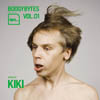 Almost in reaction to Modeselektor’s recent foray into poprealms with Hello Mom!, Bpitchinaugurates a new series of DJ mix CDs with a disc from the prolific Kiki, aFinnish producer with several singles and a full length on the label and many,many compilation appearances elsewhere.
Almost in reaction to Modeselektor’s recent foray into poprealms with Hello Mom!, Bpitchinaugurates a new series of DJ mix CDs with a disc from the prolific Kiki, aFinnish producer with several singles and a full length on the label and many,many compilation appearances elsewhere.The brilliant cover—a still of the artist mid-headbang,shirtless and zombified against a slate gray background—sets the mood of thisset rather well. Kiki’s music has alwaysbeen some of the more recklessly flamboyant on the label, though never withouta stylized distance, his disco-fried tracks always taking the reference to itsbreaking point before pulling back into dark, almost gothic remove in bizarreemphasis and homage to the plasticity of its creation. Tracks like “Hott!,” and “Luv Sikk,” speak apessimistic cheekiness in titles alone, and the stiff pan-ethnic borrowing ofthe tracks in turn accentuates both the irresistibility of their rhythmic coilsand the desperate, regenerate puppet-dance inspired. A Kiki mix is similarly disco-derived withthe dark gurglings of electro and gothic crooning along the bottom.
The mix begins with one its best tracks, from ex-Wax Trax-er/PTV-iteFred Giannelli. “Distant Gratification” could be a mood-piece for the wholedisc: cold; comfortable electro sputtering flat; with synthetic arpeggiosflattened and reduced to a depressive wallpaper. Although distant, the personality of the trackcomes through in subtle filter and is made more powerful for it. Boogybytesnever reaches above this strangely addictive reanimation, even during Kiki’sfrequent blending of newer Bpitch tracks like his own “End of the World” orEllen Allien’s electric “Your Body Is My Body.”
The mood is sublime automatism, bolstered by a few brillianttracks like Troy Pierce’s nearly industrial “Smack The Black Off of Ya” andDonal Tierney’s “Verse 2 The Chorus,” effectively mixed with Andre Kraml’s“Safari,” a track that Kiki and Silversurfer have remixed in the past. One of the most appealing things about the discis that, despite the track listing, Kiki is often mixing in at least one otherunlisted item, making for new avenues of comparison or discovery within the relativehomogeneity of atmosphere.
A few missteps occur toward the end of the hour+ length whenseveral weak vocal tracks are worked in. Microhouse artist Turner’s “When Will We Leave (Robert Hood mix)” was nodoubt included for the drowning, swallowed urgency of the vocal, though thepulse of the track is all wrong and ends up mixing poorly. Likewise, tracks by better-known artists Slamand Infusion color the end of the mix with cheap imagery, altering any subtletyor tact in Kiki’s complexifying of the sound’s plasticity. While not the mindblowing mix I’d expect tohear from such a great producer, Boogybytesis nonetheless entertaining throughout, and it will certainly be nice to hearwhat comes of this series in the future.
samples:
- Donal Tierney - Verse 2 The Chorus
- Fred Giannelli - Distant Gratification
- Troy Pierce - Smack the Black Off Ya
Read More
- Administrator
- Albums and Singles
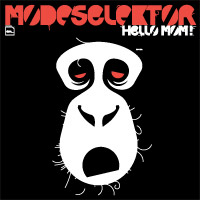 Modeselektor's debut full-length release focuses their technicaldexterities on a brilliantly diverse collection of robotic pop andround, hazydub currents, full of guest vocalists, humorous suggestion, and energythatfeels entirely organic despite the continually wow-ing productionplays.
Modeselektor's debut full-length release focuses their technicaldexterities on a brilliantly diverse collection of robotic pop andround, hazydub currents, full of guest vocalists, humorous suggestion, and energythatfeels entirely organic despite the continually wow-ing productionplays.
On past 12” singles (the only things they’ve put out until now),Modeselektor seemed to me the token glitch or IDM artist on the Bpitch Controllabel. The gloss of precise cuts andcomplex, dubby bass parts made a Modeselektor track stand out among label compsor remix collections, though from a distance, I think, the glitch factor endedup familiarizing the tracks, separating them from a label aesthetic founded onthe odd, the unpredictable, and the contradictory. The hyperactivity of Modeselektor’s earlytracks, though at home in a one-off remix for labelmates, felt oftengratuitous, pushing the music toward a thinking-man’s stasis, a numbingmonochrome when the label’s larger goal seemed always a technicolor amalgam ofpersonality and stylization, past and future.
If thosefirst 12” singles alienated label fans, the duo’s first full length might do the samebut in the opposite direction. Many of these tracks hit on what I’d call instrumentalhip-hop by today’s standards; even the ones without someone toasting ontopachieve urgency and emotion through the play of thick hooks bracingagainst themetallic underlayer.
The duo iscareful to counter their more mechanized moments with vocal humanity, and thesetracks become some of the best: TTC’s French rap pushed through a kaleidoscopeof stuttered arabesques in “Dancing Box” or Sacha Ferera’s relentlessM.I.A.-ism, “Silikon.” Elsewhere, trackslike “In Loving Memory” or Paul St. Hillaire’s “Fake Emotion” create perfectisolations from dancefloor, blending bright dub with the cool streamlining ofGerman techno, as Mouse on Mars might. With “I Love You,” the album closer, Modeselektor proves that they’veeven mastered their glitchist tendencies, creating a sugary, transcendenthomage to classic IDM.
The hardened,brutally anthemic techno that has dominated most of the recent Bpitch 12” singlesmight be the only thing left un-tried on HelloMom!, though remixes are soon to follow. A new favorite of mine, the record is surprisingly solid, in consistencyand emotional gratification, and gives back in many different listeningenvironments. Hi mom.
samples:
- Fake Emotion (feat. Paul St. Hillaire)
- In Loving Memory
- Ziq Zag
Read More
- Administrator
- Albums and Singles
 Mike Cooper is a difficult artist to situate, straddling as he doesseveral radically different musical spheres. There is thesinger-songwriter of the 1960s, working in a traditional folk-bluesvein alongside legends like Son House, Bukka White and John LeeHooker. There is the free-improvising maverick of the 70s,producing genre-defying free-folk-jazz with improv luminaries such asKeith Rowe, David Toop and Max Eastley. Then there is the mostrecent phase of Cooper's career, producing idiosyncratic modern exoticacombining his passions for Hawaiian lap-steel guitar with fieldrecordings, dusty record loops and forays into drone and noise.
Mike Cooper is a difficult artist to situate, straddling as he doesseveral radically different musical spheres. There is thesinger-songwriter of the 1960s, working in a traditional folk-bluesvein alongside legends like Son House, Bukka White and John LeeHooker. There is the free-improvising maverick of the 70s,producing genre-defying free-folk-jazz with improv luminaries such asKeith Rowe, David Toop and Max Eastley. Then there is the mostrecent phase of Cooper's career, producing idiosyncratic modern exoticacombining his passions for Hawaiian lap-steel guitar with fieldrecordings, dusty record loops and forays into drone and noise.Hipshot
In the past, I've made the case for Mike Cooper as a unique and largelyunderappreciated voice in modern music (read my previous reviews here and here),and these two new CD-Rs on the artist's own Hipshot label present yetmore evidence of Cooper's willingness to push out the boundaries of hisart. Spirit Songs attempts a complex synthesis of the three approaches mentioned above - song, improv and loops; while Giacintois an understated tribute to Italian composer Giacinto Scelsi, afascinating tangent into abstract guitar drone. Once again, bothalbums are limited, handmade CD-Rs available exclusively from theartist himself, who suggests putting cash inside a birthday card andsending it to his address in Rome.
Spirit Songs is my favorite of the pair: a glorious marriage ofall three of Cooper's previous musical strategies; creating a stunninghybrid. The album contains 10 songs performed on fingerpickedacoustic and electric lap steel guitar, often looped and treated inreal time, with Cooper singing lyrics in a quietly meandering,semi-improvisatory manner that recalls a more polished Jandek. The style of songwriting is immediately recognizable as blues, but anintuitive, idiosyncratic form of folk-blues, with Cooper narratinglaments over matters personal and global, gentle universalisms thatdouble as political messages. All of this occurs over a looserhythmic framework provided by various noisy loops, with cracks,scratches and pops, echoes and distortions skipping out from everyrefrain. It's a gentle cacophony with subtle undercurrents ofbeauty and sadness, effortlessly nostalgic but still very rooted in thenow. I think that Mike Cooper can genuinely call this style hisown; I've never heard anything remotely like it, and it worksbeautifully, highlighting both song and singer, as well as the happyaccidents resulting from the intersection of structure and chaos. Most tracks seem to be recorded live to tape, with the title trackcoming from a live performance in front of an audience. In asense, Cooper prepared us for this direction with the unexpectedintrustion of song into his otherwise shambolic live CD-R Reluctant Swimmer/Virtual Surfer released last year, but Spirit Songs fully fleshes out the ideas only briefly glimpsed in that performance.
Giacinto represents yet another new approach from Cooper, thistime using the specific sound archicture of his National tri-plateresophonic guitar, exploring the sound produced on open strings with ahandheld battery-operated electric fan. This produces acontinuous note, not unlike an e-bowed electric guitar, but on theNational tri-plate acoustic it produces strange overtones and complexharmonics that shift, bend and mutate as the fan is applied atdifferent angles to differente combinations of strings. Thisresults in a suite of strikingly unique drone pieces which have aspecific alien resonance that immediately sets them apart from mostother drone musics produced with analog or digital methods. Ofcourse, Cooper cannot help but fill out these drone compositions withhis live-sampling and looping techniques, producing several long-formpieces that gradually build up layers of hypnotic drone at differenttones and pitches, building up an immersive sonic atmosphere that attimes reminded me of Sublime Frequencies' Broken Hearted Dragonflies CDof "insect electronica" recorded in Southest Asia. The differencehere is that Cooper makes his insects buzz, hum and sing along with hisincredible improvisatory instinct; only occasionally does the joke wearthin on Giacinto, which is a lot more than I can say for many other current groups producing low-tech drone.
Sometimes it can seem—especially to people like me who write aboutmusic and receive thousands of flimsy CD-R demos and promos everymonth—that recording and releasing music has become almost too easyand democratic these days, leading to an underground market floodedwith homegrown crap that would have been better left languishing on thebedroom floor. An artist like Mike Cooper, however, with hiswillingly unprofressional and strictly uncommercial home operation, isproducing amazing music to rival the best of the current critical"canon" of experimental music, can restore my faith in the newdemocracy of the digital age.
Spirit Songs samples:
Giacinto samples:
Read More
- Administrator
- Albums and Singles
 Hard techno purists have come to rely on the handful of twelve-inchesfrom the Collabs series, brainchild of Joachem Papp (a.k.a. Speedy J)in partnership with select formidable co-conspirators. Here, one suchparticipant, globetrotting DJ/producer Chris Liebing, adds hisdancefloor know-how to the mix, yielding powerful results.
Hard techno purists have come to rely on the handful of twelve-inchesfrom the Collabs series, brainchild of Joachem Papp (a.k.a. Speedy J)in partnership with select formidable co-conspirators. Here, one suchparticipant, globetrotting DJ/producer Chris Liebing, adds hisdancefloor know-how to the mix, yielding powerful results.Novamute
The insertion of an apparent "equal partner" with a somewhat less reliable solo discography led me to wonder if Metalismmight contain a diluted, tamer sound. Thankfully, such fears wereunnecessary, and those who have followed Paap's career to this pointcan rest assured of what lies beneath the plastic shrinkwrap. Darknessundeniably defines this industrial strength outing, starting from therumbling ambience, and subsequent rhythmic as well as arrhythmicinterruptions, of "Lego," which segues smoothly into the machine funkof the following track "Modish Ride."
Still, the album's truly nasty side remains relatively subdued until"Hilt," a clanging, howling track driven by a heavy, sludge-soaked beatakin to labelmate T. Raumschmiere's ugliest work. From there on, thetempo rises as does the noise level, with the distorted bass of"Tunox," and arpeggiated squelches of "Acid Trezcore" capable ofensnaring helpless clubgoers and passive home listeners alike. Thelengthy breakdown on "Cream 3" is nothing short of decimating and thethought of experiencing these grinding, frying electronics on asuperclub's soundsystem inspires chills. Thankfully, the initiallybeatless "Eventide" gives weary feet a break with swelling cinematicstrings and bleak supportive drones before finishing with the disperateclosers "Lava" and "Assault." A live recording of "Trikco," originallyreleased on a Collabs 12" from the duo, appears as a bonus and, whileappreciated, disrupts the album's flow, preventing much in the way ofclosure.
While never quite matching the expansive journeylike qualities nor the furious BPMs of Paap's 2002 stunning Loudboxer, Metalismmakes up for its occasionally haphazard lack of cohesion with animpressive 74 minute presentation of high caliber composition andproduction acumen. I should have expected nothing less.
samples:
Read More
- Administrator
- Albums and Singles
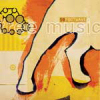 This five-song EP is just what the title says: free music. The entire album can be downloaded from the 50FootWave Web site,along with artwork, and the band is encouraging downloaders to sharethe love through online file sharing, burning CDs for friends, oranything other means they can think of. And music this good should beshared.
This five-song EP is just what the title says: free music. The entire album can be downloaded from the 50FootWave Web site,along with artwork, and the band is encouraging downloaders to sharethe love through online file sharing, burning CDs for friends, oranything other means they can think of. And music this good should beshared. ThrowingMusic
Kristin Hersh and her post-Throwing Muses band are back with not only atight EP of solid rock, but a different approach in delivering thatmusic. 50FootWave is one of the growing number of bands who actually encourage the sharing of officialreleases among listeners. Fed up with the money-mindedness of the musicindustry as a whole, Hersh is lashing back by taking the opposite tack.The music is what matters here, not the money, and reaching fans is thegoal, rather than reaping profits. Word of mouth has always been thebest advertisement and while giving away an entire EP of brand-newmaterial might be a risky move, I think 50FootWave will see it pay off,and in spades.
Looking past the delivery method, the EP itself is five songs of roughrollicking guitars and Hersh's distinctive sandpaper-wrapped voice. Sheclearly hasn't lost her edge and the songwriting is as strong asanything the Muses ever released. The lyrics are distilled down to thebones, cutting with a sharp bare directness and filled with images ofclear blue skies, dark dark days, and coming to terms with it all. Itsometimes seems a voice as soft as hers can be could be drowned out bythe heavy guitars, but she overwhelms them with sheer attitude. Hersh'sguitar may not snarl the way it on Limbo or University, but the soundhas a menace all its own, much like the band's watery moniker itcrashes down in a more solid and inescapable way.
This small set of songs is perfect in a way to release in this form;there's more than enough here to get any new fan hooked and headed tothe record store to find more and just enough to satisfy an older fan,at least until the next full-length release.
samples:
Read More
- Administrator
- Albums and Singles
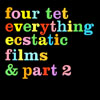 Once again a small collection of Four Tet music is packaged with a comprehensive all-inclusive DVD of Four Tet videos and once again the results are thorough enough to please everybody.
Once again a small collection of Four Tet music is packaged with a comprehensive all-inclusive DVD of Four Tet videos and once again the results are thorough enough to please everybody.Domino
Everything Ecstatic Films is a collection of music videos for every song from 2005's Everything Ecstatic: some are homemade by Kieran Hebden's close friends, others are clearly professional. The first one I saw last year was for the song "Smile Around the Face," which I continuously show at my music video night in Boston. Only a small few Americans recognize the lead character—British actor Mark Heap, who I know as the offbeat oddball Brian from the fantastic TV comedy Spaced—as the camera is focused only on his head as it follows him from a shower, to a walk around town, and to various other places (even a little kid jumps on him at one point!).
A lot of the other videos are less geared for an MTV-crowd but provide excellent visuals that could either backdrop Four Tet live performances or serve as excellent visuals at a music video night in a loud bar. "A Joy," for example, is a stunning, colorful animation by Jodie Mack, while "High Fives," by Ed Holdsworth, has surreal animations with actual people, including Kieran sporting four eyes. Other videos like "Sun Drums and Soil," by Jason Evans and "Fuji Check," by Kieran, himself, are of home video quality, but not displeasing at all, especially "You Were There With Me," which features uber sweetheart Kathryn Bint jumping in circles in various places all across the world!
The companion audio portion is Everything Ecstatic 2, an EP of previously unreleased recordings, including a 16 minute/16 second long version of "Turtle Turtle Up," originally only a brief piece on last year's Everything Ecstatic. "Sun Drums and Soil (Part 2)" includes a lot of elements from the first version but is more jazzed up. "Watching Wavelength" and "Ending" aren't terribly memorable, while the highlight for me is the new song, "This Is Six Minutes," which doesn't sound like a toss-away or outtake, but a typical track in reliable Four Tet form: it's constructed entirely from samples of other music, however it's far more complex than most other Four Tet music, with multiple layers of guitars, drums, keyboards and marimba-like instruments, all weaved together to form an intricate audio tapestry.
Together with the DVD/EP release of "My Angel Rocks Back and Forth," the entire music video collection of Four Tet can be obtained. Once again I want to stress to all the industry professional bitching about lower sales of CDs: stop holding back. Give people something special, like this, and the praise will follow.
samples:
Read More

